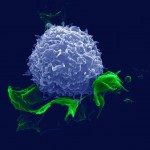Link to Pubmed [PMID] – 25149081
Acta Neuropathol. 2014 Nov;128(5):691-703
Multiple sclerosis (MS) lesions are characterized by the presence of activated astrocytes, which are thought to actively take part in propagating lesion progression by secreting pro-inflammatory mediators. Conversely, reactive astrocytes may exert disease-dampening effects through the production of trophic factors and anti-inflammatory mediators. Astrocytic control of the blood-brain barrier (BBB) is crucial for normal brain homeostasis and BBB disruption is a well-established early event in MS lesion development. Here, we set out to unravel potential protective effects of reactive astrocytes on BBB function under neuroinflammatory conditions as seen in MS, where we focus on the role of the brain morphogen retinoic acid (RA). Immunohistochemical analysis revealed that retinaldehyde dehydrogenase 2 (RALDH2), a key enzyme for RA synthesis, is highly expressed by reactive astrocytes throughout white matter lesions compared to control and normal appearing white matter. In vitro modeling of reactive astrocytes resulted in increased expression of RALDH2, enhanced RA synthesis, and a protective role for astrocyte-derived RA on BBB function during inflammation-induced barrier loss. Furthermore, RA induces endothelial immune quiescence and decreases monocyte adhesion under inflammatory conditions. Finally, we demonstrated that RA attenuated oxidative stress in inflamed endothelial cells, through activation of the antioxidant transcription factor nuclear factor E2 related factor 2. In summary, RA synthesis by reactive astrocytes represents an endogenous protective response to neuroinflammation, possibly aimed at protecting the BBB against inflammatory insult. A better understanding of RA signaling in MS pathophysiology may lead to the discovery of novel targets to halt disease progression.

